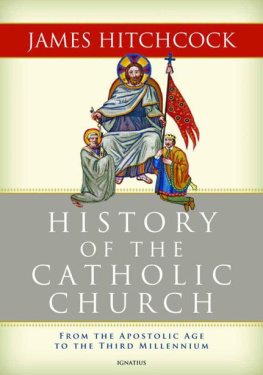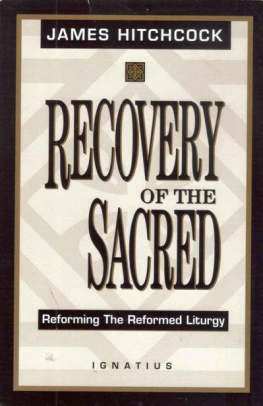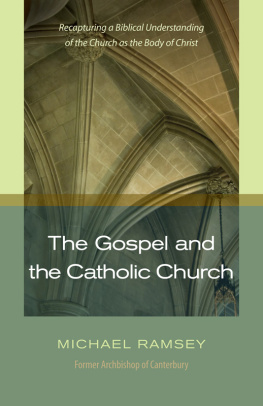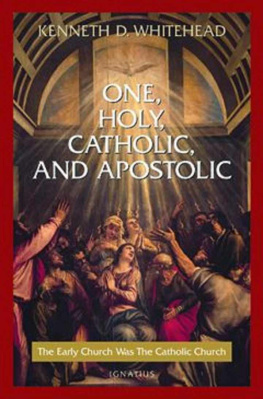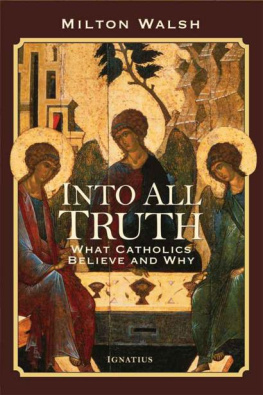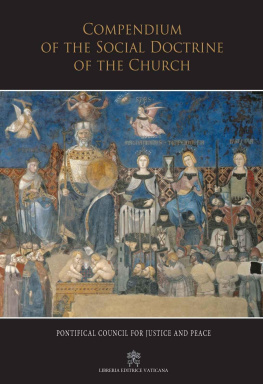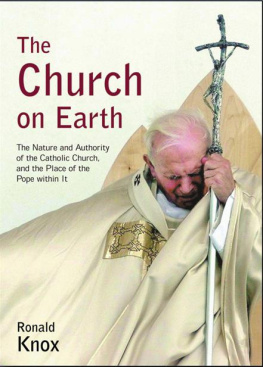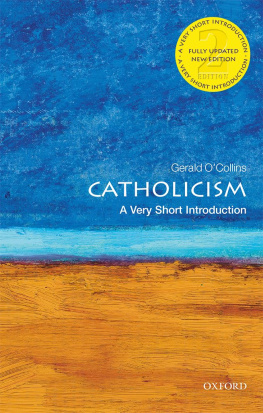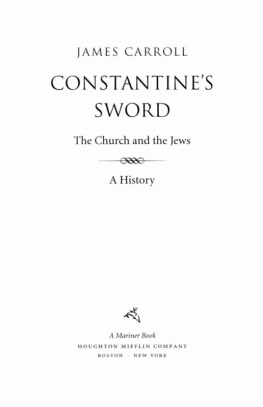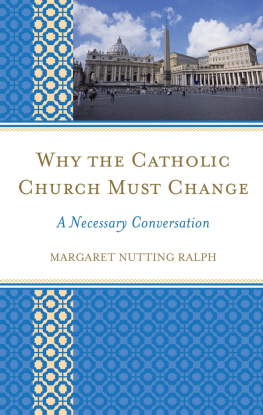HISTORY OF THE
CATHOLIC CHURCH
JAMES HITCHCOCK
HISTORY OF THE
CATHOLIC CHURCH
From the Apostolic Age to the Third Millenium
IGNATIUS PRESS SAN FRANCISCO
Cover art: Christ the King
Mosaic, circ A.D. 800, Lateran Palace, Rome
Photograph by Fr. Lawrence Lew, O.P.
Cover design by John Herreid
2012 by Ignatius Press, San Francisco
All rights reserved
ISBN 978-1-58617-664-8
Library of Congress Control Number 2012933887
Printed in the United States of America
For the Kassings:
Don, Alexandra,
Francesca, Anna, Amelia, Dominic
Contents
Acknowledgements
My interest in church history was fostered by, among others, my undergraduate professors, the late Thomas P. Neill and the Rev. Joseph A. McCallin, S.J., of St. Louis University, and my graduate professors, the late E. Harris Harbison and Joseph R. Strayer of Princeton University. I have especially profited from discussions about church history with my colleagues at St. Louis UniversityThomas Madden, Damian Smith, and Warren Treadgold.
Introduction
The Catholic Church is the longest-enduring institution in the world, and her historical character is integral to her identity.
The earliest Christians claimed to be witnesses to the life, death, and Resurrection of Jesus, thereby making Christianity a historical religion, emanating from a Judaism that was itself a historical religion. Christianity staked its claim to truth on certain events, notably that at a precise moment in history the Son of God came to earth. The Gospels have a ring of historical authenticity partly because of the numerous concrete details they contain, the care with which they record the times and places of Jesus life.
While there is no purely historical argument that could convince skeptics that Jesus rose from the dead and appeared to His disciples, His Resurrection can scarcely be excluded from any historical account. Marc Bloch, the great medievalist who was a secular-minded Jew (he perished in a German prison camp), observed that the real question concerning the history of Christianity is why so many people fervently believed that Jesus rose from the dead, a belief of such power and duration as to be hardly explicable in purely human terms.
But an awareness of the historical character of the Church carries with it the danger that she will be seen as only a product of history, without a transcendent divine character. While Christians can never be indifferent to the reliability of historical claims, since to discredit the historical basis of the Gospel would be to discredit the entire faith, they must be aware of their limits.
The modern historical-critical method has provided valuable help in understanding Scriptureexplicating the precise meaning of words, recovering the social and cultural milieu in which Jesus lived, situating particular passages in the context of the entire Bible. But it understands the Bible primarily in terms of the times in which it was written and can affirm no transcendent meaning.
Also, modern scholarship itself is bound by its own times, and the historical-critical method has a history of its own that can also be relativized. Some scholars cultivate a spirit of skepticism about almost everything in Scripture, including its antiquity and the accuracy of its accounts. A major fallacy of this skepticism is the assumption that, while religious believers are fatally biased, skeptics are objective and disinterested. Some practitioners of the historical-critical method take a far more suspicious view of Christian origins than most historians take toward other aspects of ancient history. (Far more is known about Jesus than about many of the Roman emperors.)
Then there are the attempts of some historians to make Jesus a modern manthe claim that He liberated women in the feminist sense or that He was the leader of a political movement. Such claims necessarily assume that from the very beginning the leaders of the Church systematically falsified the record, concealing the fact that women were among the Twelve, for example.
The distinction between the Jesus of history and the Christ of faith was formulated by certain modern theologians as part of the effort to demythologize Jesus as the Son of God and Redeemer of the universe, dismissing that belief as a theological construct only loosely connected, if at all, to the actual, historical Jesus.
A fundamental flaw of the historical-critical method is that, while at various times it has called virtually all traditional beliefs into question, it offers no sure replacement, merely many competing theories. If the babel of scholarly voices is taken at face value, it forces the conclusion that there is no reliable knowledge of Jesus. But Christians can scarcely think that God gave the Bible to man as a revelation of Himself but did so in such a way as to render it endlessly problematical, or that for many centuries its true meaning was obscured and only came to light in modern times.
Thus, while making use of scholarship, Christians must ultimately read Scripture with the eyes of faith. Its central messagesalvation through Jesus Christis incomprehensible to those who treat it as a merely human document.
The most influential recent attempt to discredit the historicity of the New Testament is the rediscovery of certain Gnostic gospels (all written later than the New Testament itself) upon which popular works such as The Da Vinci Code are based. These gospels are accounts of Jesus life and teachings allegedly written by Mary Magdalen, Judas Iscariot, and the Apostles Philip and Thomas.
Gnosticism (see Chapter Two below, pp. 36-39) was the only heretical movement in the history of the Church that considered it unimportant whether the Gospel narratives were historically true. The Gnostics rejected the historical accounts in the New Testament not in order to propose a different history but in order to turn the faith into a myth that stood outside time. For them, the historicity of the New Testament was an embarrassment, since the wholly spiritual God could not have entered into the world of matter and time.
The most lasting division in the history of Christianity was the Protestant Reformation of the sixteenth century, but even then, both Catholics and Protestants agreed on the ultimate authority of the New Testament and the early creeds, a core of faith that was normative. Now, however, proponents of the Gnostic gospels, including even some professed Christians, seek to reopen questions that had been settled since at least the fourth century.
By excluding in principle the very possibility of divine revelation, they imprison Christianity entirely within the movement of history, essentially reducing questions of faith to factional struggles within the Church. If orthodox Christianity does not represent revealed truth, it must be seen as merely the triumph of one party over another, making it possible to cancel seventeen centuries of history in order to redefine the very foundations of the Church.
Modern feminism has much to do with this effort, because the Gnostic gospels can be used to claim that the New Testament was actually a kind of masculine conspiracy to conceal the role of women in the early Church, despite the fact that Gnosticism by no means respected women in the sense that feminists understand respect. Gnosticism also has a certain modern appeal because it offers spirituality divorced from dogma, its gospels treated as interesting and possibly inspiring myths to be read in the same way the myths of other religions can be read, embodying no final and binding truth.
The historical character of the Church is embodied above all in her affirmation of Traditionthe handing on of the faith from generation to generation, guided by the Holy Spirit. The attempt to appeal to the Scripture against Tradition is a denial of that historicity.
Next page
